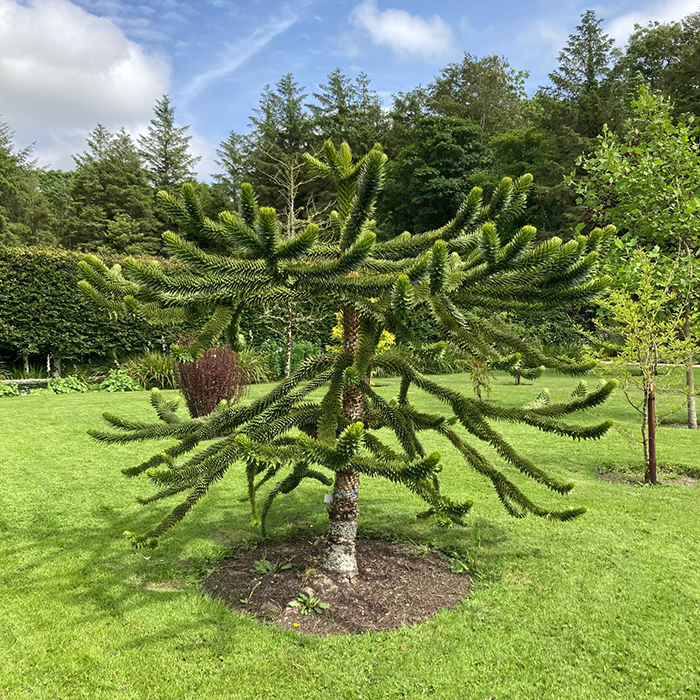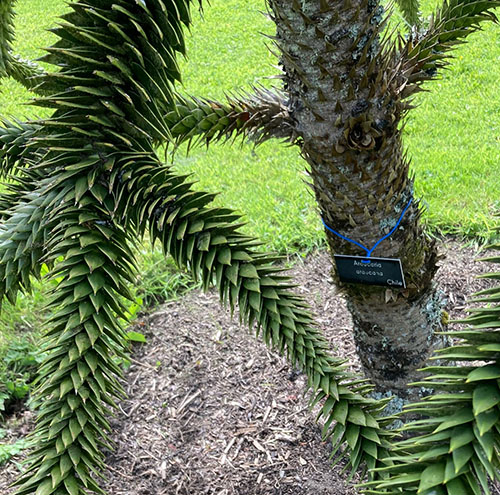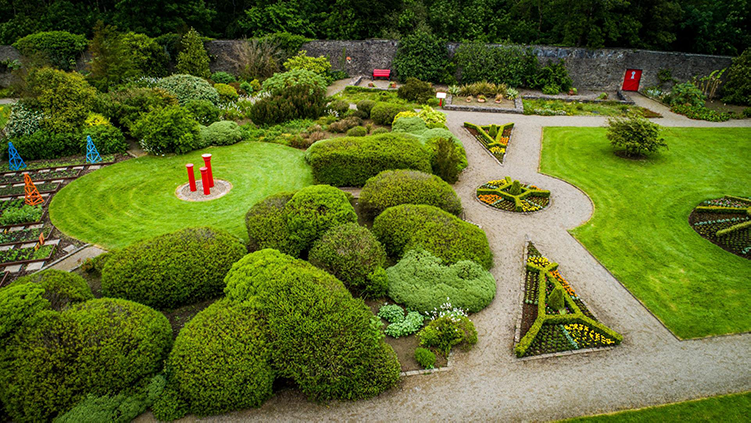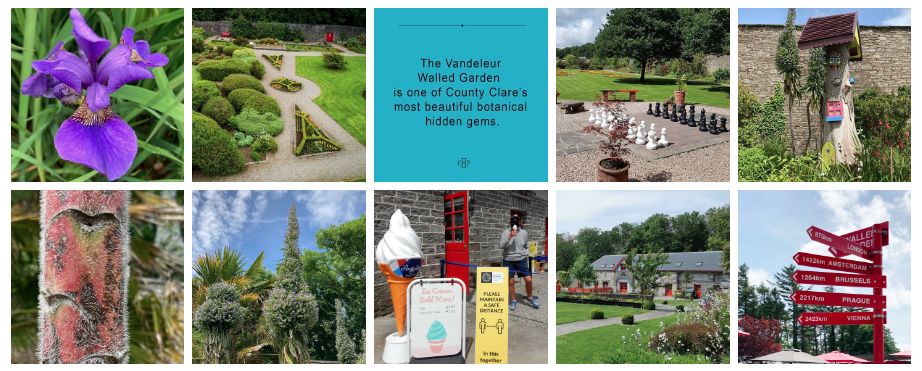The Vandeleur Walled Garden
At long last we are going to the Vandeleur Walled Garden. We see the signs for it when passing through Kilrush (Cill Rois, meaning “Church of the Woods”) on the way to the Killimer-Tarbert Car Ferry. Crossing the River Shannon shaves off about an hour and a half when traveling to Ballybunion in County Kerry.
Our objective has always been to get to our golf destination — never to sightsee along the way. But today was meant to be a day off from golf to do something different!
Kevin knows the roads like the back of his hand, so getting there is a doddle.
The Vandeleur Walled Garden was once the private garden of Kilrush House, ancestral home of the Dutch Vandeleur family in the early 19th century. The house was completely destroyed by fire in 1897 and was eventually demolished. The garden underwent restoration in 1997 and is a wonderland of exotic plants and charming pathways. We practically had it to ourselves on this lovely dry afternoon.
 Before we left the house I searched online to make sure Vandeleur was open. I also read it had an exceptional collection of trees from oak and mountain ash to the quirky monkey puzzle tree.
Before we left the house I searched online to make sure Vandeleur was open. I also read it had an exceptional collection of trees from oak and mountain ash to the quirky monkey puzzle tree.
Now this I was very keen to see! I had come across this tree before when we were staying at the ultra posh Eden Mansion outside of St Andrews several years ago. They also had a lovely walled garden on the property and as I was leaving I noticed these gigantic, remarkable trees that I had missed on the way in. They can grow to a height of 150 feet!
I was totally enraptured by the bark in particular. When I did some research about them back then, I learned they are native to Chile and Argentina and had become quite fashionable to British horticulture lovers in the 1800s.
Acacia baileyana ‘Purpurea’
Everything about the monkey puzzle tree is exotic. The botanical name is Acacia baileyana ‘Purpurea’. They only produce top cover when over fifty years old and female cones can take three years to ripen. The cones grow to the size of a human head and contain over 200 seeds.
I learned online that the species has lived for more than 1,300 years but their numbers are now dwindling at such a rate that the Chilean government has designated them as national monuments. For the Pehuenche Indians of southern Chile the monkey puzzle tree is a sacred way of life. The seeds form a staple of their diet and that of their livestock.
I approached a lady who was kneeling and digging holes for small plants, arranging them in a star pattern. She had short curly red hair and was wearing a neon green vest, like three other men I noticed doing various landscaping tasks.
 “Sorry to bother you but could you tell me where is the monkey puzzle tree?”
“Sorry to bother you but could you tell me where is the monkey puzzle tree?”
“There,” she said.
I followed where she was pointing but couldn’t figure out which tree she meant. She stood up and we took several steps together. Then she pointed to a most unusual tree, but not what I was expecting.
We moved closer and I accidentally touched the pointy end of a branch.
“Oh, it’s so sharp,” I exclaimed, taking a step back, as if it bit me!
The sensation immediately conjured up a vision of prickly pears and multitudinous variety of spiny cacti we have in Scottsdale.
“I live in Arizona,” I ventured. “Everything in the desert is prickly,”
We stood there admiring this exotic specimen and my landscape guide told me, “A man came to Vandeleur and wanted to buy this tree.”
He offered an exorbitant sum. “Money is no object,” he said.
Curly red head recounted the story, “It’s not for sale at any price.”
 “How long would it take to get this tall?” I asked.
“How long would it take to get this tall?” I asked.
“About twenty years to get as big as it is now and it would have been planted when it was about knee high.”
Also sometimes referred to as Chilean Pine, one theory about how it got its common name is because it “would puzzle a monkey to climb that tree.”
I thanked my companion, “Sorry to interrupt your work.”
Smiling, she said, “Oh, you’ve saved my back!”
Just vanilla ice cream!
Kevin had disappeared and may have gone back to get a second ice cream cone near the entrance. Sure enough, I found him sitting at a little round table near the concession stand, grinning like a Cheshire Cat.
Kevin has two addictions. One is golf and the other is the delicious soft ice-cream cones like you would get at Dairy Queen in the U.S.
No amount of purple, red, yellow or orange flowers can upstage the creamy white vanilla-topped cone for Kevin. He is happy to go anywhere if there might be ice cream in the offing. Nothing more exotic needs be on the agenda — just vanilla ice cream!
More images from the trip to Vandeleur Walled Garden can be seen HERE:





